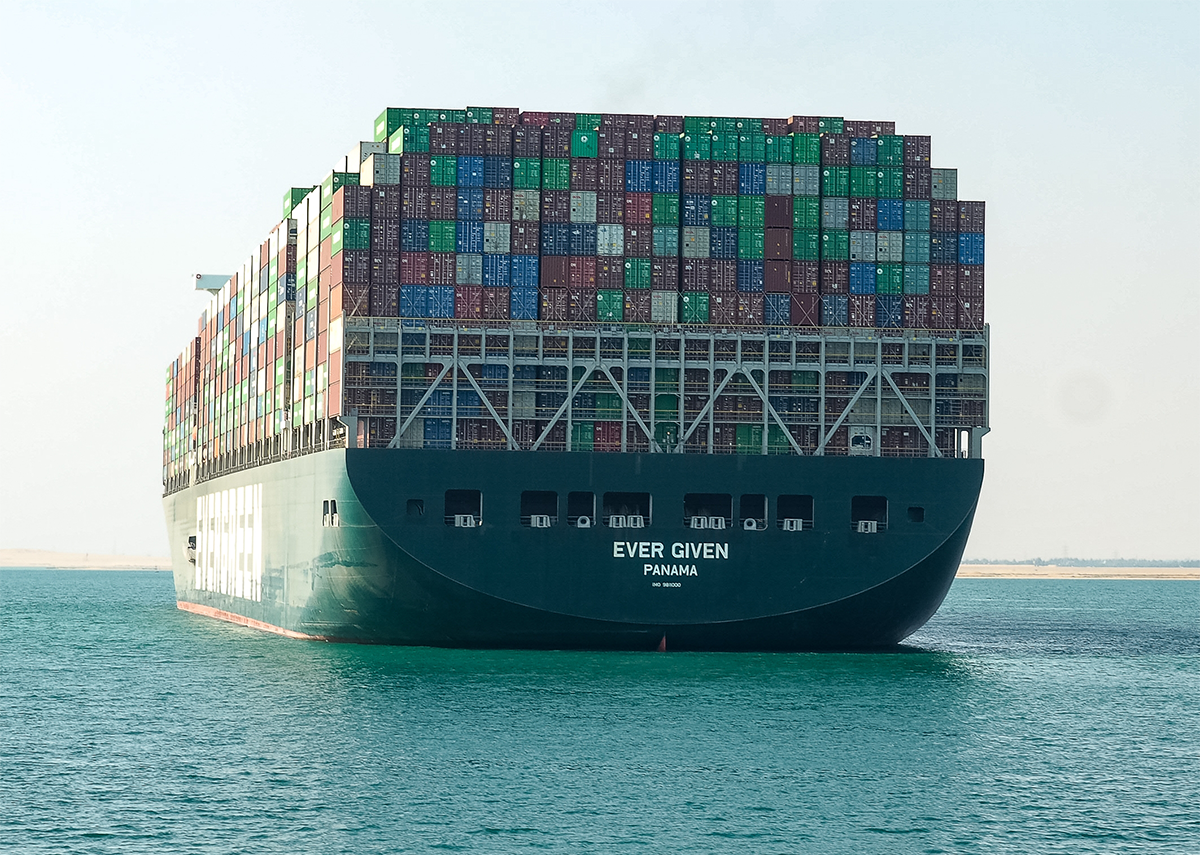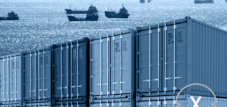
Ship congestion off the European ports of Rotterdam and Antwerp – Image: FabianIrwin|Shutterstock.com
Ship congestion outside European ports
Tankers and container ships are currently backed up outside the European ports of Rotterdam and Antwerp. This is shown in the graphic based on a recent map excerpt from FleetMon , an online tracking portal for ships. Further north, off the Elbe estuary, a number of cargo ships are also stuck, waiting to be allowed to enter the port. The map excerpt illustrates that the global economy is once again suffering more significantly from delays in container shipping.
According to the “Kiel Trade Indicator” compiled by the Kiel Institute for the World Economy (IfW), nearly two percent of global freight capacity is currently stuck in the North Sea off the ports of Germany, the Netherlands, and Belgium. The affected ships cannot be loaded or unloaded, according to the IfW. “In the German Bight, about a dozen large container ships with a total capacity of approximately 150,000 standard containers are waiting to dock in Hamburg or Bremerhaven. The situation is even more dramatic off the ports of Rotterdam and Antwerp,” the IfW reported.
Cargo and container ships have been piling up for weeks in front of the port of Shanghai and the neighboring province of Zhejiang, as this Statista graphic shows. The reason for the congestion was the strict lockdown imposed on the city by the Chinese government. This also affected port workers, meaning the world's largest port currently has to operate with significantly fewer personnel. Until recently, the entire Chinese economy suffered under sometimes draconian coronavirus restrictions. Following their easing, the economy is now recovering. Exports increased significantly in May.
Fleetmon uses Automatic Identification System (AIS) signals from ships to display traffic volume. These signals are used in shipping to exchange navigation data via radio. Every ship over 20 meters in length is required to transmit an AIS signal. This signal includes call sign, ship type, GPS position, dimensions, and similar data.
English Version: Ship congestion off Europe's ports
Tankers and container ships are currently jammed in front of the European ports of Rotterdam and Antwerp. This is shown in the chart based on a current map section from FleetMon , an online tracking portal for ships. Further north, off the mouth of the Elbe, a number of cargo ships are also moored and waiting to be allowed to enter the port. The map section illustrates that the global economy is currently again suffering more from delays in container shipping.
According to the “Kiel Trade Indicator” compiled by the Kiel Institute for the World Economy (IfW), almost two percent of global freight capacity is currently stuck in the North Sea off the ports of Germany, Holland and Belgium. According to the IfW, the affected ships can neither be loaded nor unloaded. "In the German bay, about a dozen large container ships with a total capacity of about 150,000 standard containers are waiting to call at Hamburg or Bremerhaven. The situation is even more dramatic off the ports of Rotterdam and Antwerp," the IfW informed.
Freight and container ships have also been jammed for weeks outside the port of Shanghai and the neighboring province of Zheijang, as this Statista graphic shows. The reason for the traffic jam was the tough lockdown imposed by the Chinese government on the city. This also affected port employees, which is why the world's largest port currently has to manage with significantly fewer staff. Until recently, the entire Chinese economy suffered from partly draconian Corona restrictions. Now that they have been eased, things are looking up again. Exports increased significantly in May.
Fleetmon uses the Automatic Identification Systems (AIS) signals of ships to display the traffic volume. These are used in shipping to exchange navigational data via radio. Every ship over 20m has to transmit an AIS signal. It transmits, among other things, call name, vessel type, GPS position, dimensions and similar data.
China | Fragile global supply chains with no end in sight: Ship jam off Shanghai
Fragile global supply chains with no end in sight: Ship jam off Shanghai – Image: Xpert.Digital / topae & PeskyMonkey|Shutterstock.com
We recently wrote about this: “As has been described countless times before, globalization has severely strained supply chain structures, making them vulnerable to unexpected crises beyond their control. However, it has also failed to strategically sensitize them in a relatively short time. This means that no easing of the situation along the supply chain in logistics or intralogistics is in sight for the future.”
Now is the time to act. Anyone who only acts now is late – and there are many! As early as 2012, a survey revealed that 16.2% of companies polled had no solutions or strategies for supply chain risk management. A response is urgently needed now, because the current situation is here to stay. And what many aren't even considering: the danger of a chain reaction and the potential consequences of further crises is real. Can anyone seriously say that's it?
Supply chain on the brink? The delivery difficulties and solutions
Is the global supply chain tearing apart due to ongoing problems and regional crises? – Image: Xpert.Digital / Iaroslav Neliubov|Shutterstock.com
We recently wrote about this: “As has been described countless times before, globalization has severely strained supply chain structures, making them vulnerable to unexpected crises beyond their control. However, it has also failed to strategically sensitize them in a relatively short time. This means that no easing of the situation along the supply chain in logistics or intralogistics is in sight for the future.”
Now is the time to act. Anyone who only acts now is late – and there are many! As early as 2012, a survey revealed that 16.2% of companies polled had no solutions or strategies for supply chain risk management. A response is urgently needed now, because the current situation is here to stay. And what many aren't even considering: the danger of a chain reaction and the potential consequences of further crises is real. Can anyone seriously say that's it?
Action is needed to ensure continued functioning supply chains
Fragile supply chains: Supply chain under pressure – Image: Xpert.Digital / Travel mania|Shutterstock.com
Global supply chains are still strained by the pandemic. Many countries have implemented numerous anti-pandemic measures, triggering significant delays in value and supply chains. For example, control and quarantine zones at logistics hubs have led to supply bottlenecks. As a result, many suppliers have been hampered in their production and have been unable to fully meet their delivery obligations. A lack of components can quickly and severely disrupt production processes. Added to this are the shortages of workers due to illness or travel restrictions.
Xpert.Digital – Konrad Wolfenstein
Xpert.Digital is a hub for industry with a focus on digitalization, mechanical engineering, logistics/intralogistics and photovoltaics.
With our 360° business development solution, we support well-known companies from new business to after sales.
Market intelligence, smarketing, marketing automation, content development, PR, mail campaigns, personalized social media and lead nurturing are part of our digital tools.
You can find out more at: www.xpert.digital – www.xpert.solar – www.xpert.plus

